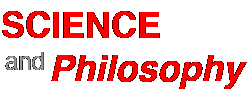Davies, Paul The Cosmic Blueprint Simon & Schuster, New York 1989 [abstract— 170 words] — self-organized structures
Traditional science studies systems that can be reduced to a few fundamental interactions described by deterministic laws.
Now a completely new view of nature is emerging which recognizes that many phenomena, phase changes and turbulent whorls for example, fall outside the conventional framework. Such systems exhibit abrupt transitions to new states which have very different properties. They have sudden leaps to much more elaborate and complex arrangements. Systems that undergo such transitions are referred to as self-organizing. Self-organization has been found in astronomy, physics, chemistry and biology.
Systems driven far from equilibrium by the input of energy tend to undergo abrupt spontaneous changes of behavior. They may start to behave erratically, or to organize themselves into new and unexpected forms. They are called dissipative structures because they not only absorb energy but they characteristically give it off as they maintain themselves. Living organisms are among the prime examples.
Self-organized systems are the source of order in the universe, bringing unpredictability, evolving complexity and variety into being.


